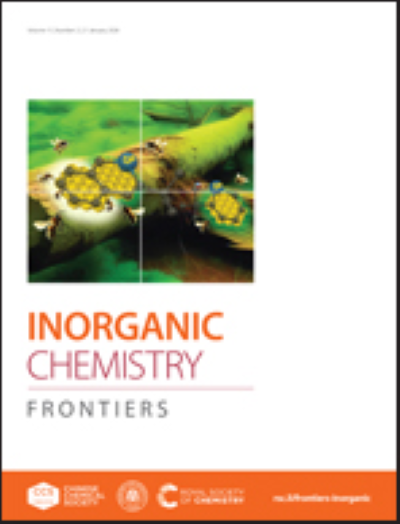Enhancing electrocatalytic hydrogen evolution efficiency: tuning catalyst support pore size to optimize hydrogen adsorption–desorption kinetics
IF 6.1
1区 化学
Q1 CHEMISTRY, INORGANIC & NUCLEAR
引用次数: 0
Abstract
Developing an electrocatalyst for the hydrogen evolution reaction (HER) with a facile synthesis method and superior catalytic performance is crucial for achieving cost-effective, environmentally sustainable, and efficient hydrogen energy production. Noble metal nanoparticles have been extensively utilized as HER electrocatalysts due to their high catalytic activity, tunable composition, and electronic structure. However, their widespread application is limited by high costs. A promising strategy to enhance the utilization efficiency of noble metals involves the fabrication of noble metal–carbon composites with optimized hydrogen evolution kinetics. In this study, a SiO2-template method was employed to modulate the pore size of hollow mesoporous carbon spheres (HMCSs) by controlling the formation rate of SiO2. Additionally, microwave-assisted pyrolysis of Ru carbonyl compounds enabled the rapid synthesis of ultrasmall Ru nanoclusters confined within HMCSs (Ru/HMCS-2-3) in only 15 minutes. The resulting Ru/HMCS-2-3 catalyst exhibited highly efficient Ru utilization and demonstrated HER activity superior to that of commercial Pt/C catalysts in alkaline solutions, achieving a current density of 10 mA cm−2 at an overpotential of only 18.9 mV. Furthermore, Ru/HMCS-2-3 exhibited excellent cycling stability and durability, with no significant overpotential degradation observed after 1,000 cyclic voltammetry (CV) scans and negligible current density loss during a 48-hour chronoamperometry (i–t) test. In situ Raman spectroscopy, CV analysis in the hydrogen desorption region, and density functional theory (DFT) calculations revealed that the catalyst exhibits a strong H2O adsorption, rapid H2O dissociation at low overpotential, and excellent hydrogen adsorption–desorption kinetics. Additionally, the spatial confinement effect of HMCS-2 on Ru clusters contributed to its remarkable HER activity and stability. These findings highlight the potential of Ru/HMCS-2-3 as a highly efficient and durable HER electrocatalyst for sustainable hydrogen production.

提高电催化析氢效率:调整催化剂载体孔径以优化氢吸附-解吸动力学
开发一种合成方法简单、催化性能优异的析氢反应电催化剂对于实现经济高效、环境可持续、高效的氢能源生产至关重要。贵金属纳米颗粒由于其高催化活性、可调的组成和电子结构而被广泛用作HER电催化剂。然而,它们的广泛应用受到高成本的限制。制备具有优化析氢动力学的贵金属-碳复合材料是提高贵金属利用效率的一种有前途的策略。本研究采用SiO2模板法,通过控制SiO2的形成速率来调节中空介孔碳球(HMCSs)的孔径。此外,Ru羰基化合物的微波辅助热解可以在15分钟内快速合成hmcs (Ru/HMCS-2-3)内的超小Ru纳米团簇。制备的Ru/HMCS-2-3催化剂在碱性溶液中具有高效的Ru利用率,HER活性优于商用Pt/C催化剂,电流密度为10 mA cm−2,过电位仅为18.9 mV。此外,Ru/HMCS-2-3表现出优异的循环稳定性和耐用性,在1000次循环伏安(CV)扫描后没有观察到明显的过电位退化,在48小时计时电流(i-t)测试中可以忽略电流密度损失。原位拉曼光谱、氢脱附区的CV分析和密度泛函理论(DFT)计算表明,该催化剂具有较强的H2O吸附能力,在低过电位下快速解离H2O,以及优异的氢吸附-脱附动力学。此外,HMCS-2对Ru簇的空间约束效应是其显著的HER活性和稳定性的原因之一。这些发现突出了Ru/HMCS-2-3作为高效耐用的可持续制氢HER电催化剂的潜力。
本文章由计算机程序翻译,如有差异,请以英文原文为准。
求助全文
约1分钟内获得全文
求助全文
来源期刊

Inorganic Chemistry Frontiers
CHEMISTRY, INORGANIC & NUCLEAR-
CiteScore
10.40
自引率
7.10%
发文量
587
审稿时长
1.2 months
期刊介绍:
The international, high quality journal for interdisciplinary research between inorganic chemistry and related subjects
 求助内容:
求助内容: 应助结果提醒方式:
应助结果提醒方式:


